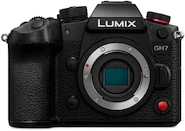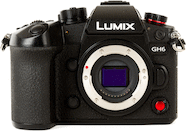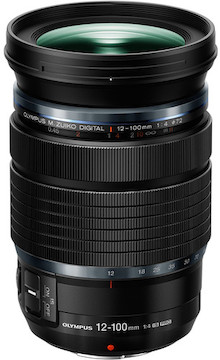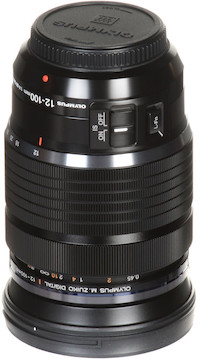- REVIEWS
Olympus 12-100mm f/4 ED IS PRO
Includes
- Olympus 12-100mm
- Hood
- Front & rear caps
- 72mm protective filter
- Lens bag
Resources
Recommended:
Filters
Cameras
Available Tomorrow
Available Tomorrow

Available Tomorrow
Available Tomorrow

Available Tomorrow
Available Tomorrow

Available Tomorrow
Available Tomorrow

Available 04/28/25
Available 04/28/25

Available Tomorrow
Available Tomorrow

Available Tomorrow
Available Tomorrow

Available Tomorrow
Available Tomorrow

Available Tomorrow
Available Tomorrow

Available Tomorrow
Available Tomorrow

Available Tomorrow
Available Tomorrow

Available Tomorrow
Available Tomorrow

Available Tomorrow
Available Tomorrow

Available Tomorrow
Available Tomorrow

Available Tomorrow
Available Tomorrow

Available Tomorrow
Available Tomorrow

Available Tomorrow
Available Tomorrow

Available Tomorrow
Available Tomorrow

Available Tomorrow
Available Tomorrow

Available Tomorrow
Available Tomorrow

Available Tomorrow
Available Tomorrow

Olympus 12-100mm f/4 ED IS PRO
The Olympus 12-100mm f/4 ED IS PRO is a wide-angle to telephoto zoom designed for Micro 4/3 cameras. This is the predecessor to the updated OM SYSTEM 12-100mm f/4 ED IS PRO. Key features include:
8x zoom range
Five-axis image-stabilization system
High-quality optics for sharp, accurate images
High-quality, weather-resistant build
Ridiculous Range/Constant Aperture. The big selling point here is the zoom. On a Micro 4/3 body, you’re getting the equivalent of a 24-200 in full frame. At just over an 8x range, that’s everything from truly wide to truly tele in a single lens. The f/4 aperture isn’t exactly supersonic in terms of speed but it remains constant across the range, making it a good choice for still shooters and videographers alike.
High-Quality Optics. The 12-100mm optical formula is in line with Olympus’s other PRO-series lenses. This lens’s incredibly complex optical construction consists of seventeen elements in fourteen groups, including one double-sided aspherical element, three standard aspherical elements, five extra-low dispersion elements, and three high-refractive index elements (including two Super HR elements). This glass menagerie works together to control aberrations and make things sharp and clear, all while reducing color fringing. There’s both a ZERO Coating and a Z Coating Nano applied to each lens element to reduce surface reflections and prevent lens flare and ghosting. The bottom line: this lens makes a pretty nice picture.
Force Level Stabilization. The five-axis Sync Image-Stabilization system helps cut out the jitters when shooting hand-held or at lower shutter speeds. But when paired with an Olympus body, the 12-100 plays a special kind of Jedi Mind Trick. The camera body’s and this lens’s combined image-stabilization systems account for 6.5 stops of shake prevention, which will keep your photos sharper and more focused.
High-Quality Build. The build quality matches the high-grade optics. The dust-, splash-, and freeze-proof design keeps you shooting without fear of poor working conditions. There’s a programmable L-Fn button for customization, a manual focus-clutch function, and a depth-of-field scale built onto the lens itself.
Specifications
| Angle of View | 84° – 12° |
| Brand | Olympus |
| Dimensions | Length: 4.59" |
| Flare Resistance | ZERO Coating and Z Coating Nano |
| Groups/Elements | 11/17 |
| Hood Included | Yes |
| Item Type | Standard Lens, Wide Angle Lens, and Telephoto Lens |
| Lens Mount | Micro 4/3 |
| Maximum Magnification | 0.3-0.21x |
| Mfr. Model Number | V314080BU000 |
| Weather Resistant | Yes |
| Weight | 1.23 lb. |
| Zoom Method | Rotary, inner zoom, and floating zoom mechanism |
Includes
- Olympus 12-100mm
- Hood
- Front & rear caps
- 72mm protective filter
- Lens bag
Specifications
| Angle of View | 84° – 12° |
| Brand | Olympus |
| Dimensions | Length: 4.59" |
| Flare Resistance | ZERO Coating and Z Coating Nano |
| Groups/Elements | 11/17 |
| Hood Included | Yes |
| Item Type | Standard Lens, Wide Angle Lens, and Telephoto Lens |
| Lens Mount | Micro 4/3 |
| Maximum Magnification | 0.3-0.21x |
| Mfr. Model Number | V314080BU000 |
| Weather Resistant | Yes |
| Weight | 1.23 lb. |
| Zoom Method | Rotary, inner zoom, and floating zoom mechanism |
Resources
Reviews
Pricing Chart
Lensrentals.com offers rentals ranging in length from 1 to 90 days. The shopping cart will automatically update the quoted price as you adjust the length of your rental. Our most common rental periods are shown below:
| Rental Period | Lenscap+ | Rental Price | Total Price | Price Per Day (Approx.) |
|---|---|---|---|---|
| 3 days | $13.00 | $55.00 | $68.00 | $22.67 |
| 4 days | $14.00 | $59.00 | $73.00 | $18.25 |
| 7 days | $18.00 | $78.00 | $96.00 | $13.71 |
| 10 days | $24.00 | $105.00 | $129.00 | $12.90 |
| 14 days | $32.00 | $137.00 | $169.00 | $12.07 |
| 21 days | $42.00 | $183.00 | $225.00 | $10.71 |
| 30 days | $53.00 | $230.00 | $283.00 | $9.43 |
| 45 days | $69.00 | $300.00 | $369.00 | $8.20 |
| 60 days | $81.00 | $351.00 | $432.00 | $7.20 |
| 90 days | $104.00 | $452.00 | $556.00 | $6.18 |
| Rental Period | Lenscap | Rental Price | Total Price | Price Per Day (Approx.) |
|---|---|---|---|---|
| 3 days | $8.00 | $55.00 | $63.00 | $21.00 |
| 4 days | $9.00 | $59.00 | $68.00 | $17.00 |
| 7 days | $12.00 | $78.00 | $90.00 | $12.86 |
| 10 days | $16.00 | $105.00 | $121.00 | $12.10 |
| 14 days | $21.00 | $137.00 | $158.00 | $11.29 |
| 21 days | $28.00 | $183.00 | $211.00 | $10.05 |
| 30 days | $35.00 | $230.00 | $265.00 | $8.83 |
| 45 days | $46.00 | $300.00 | $346.00 | $7.69 |
| 60 days | $54.00 | $351.00 | $405.00 | $6.75 |
| 90 days | $70.00 | $452.00 | $522.00 | $5.80 |
| Rental Period | Rental Price | Price Per Day (Approx.) |
|---|---|---|
| 3 days | $55.00 | $18.33 |
| 4 days | $59.00 | $14.75 |
| 7 days | $78.00 | $11.14 |
| 10 days | $105.00 | $10.50 |
| 14 days | $137.00 | $9.79 |
| 21 days | $183.00 | $8.71 |
| 30 days | $230.00 | $7.67 |
| 45 days | $300.00 | $6.67 |
| 60 days | $351.00 | $5.85 |
| 90 days | $452.00 | $5.02 |
Shipping Rates
Return shipping is included in the shipping price, and we include a prepaid return label with your order - all you need to do is bring it to an appropriate drop-off location when your rental is complete.
Enter shipping zip code
| FedEx 2Day | $25.00 shipping |
| FedEx Standard Overnight | $38.00 shipping |
| UPS Ground | $25.00 shipping |
| UPS Next Day Air | $48.00 shipping |
Diagrams
Olympus 12-100mm f/4 ED IS PRO
Rental








